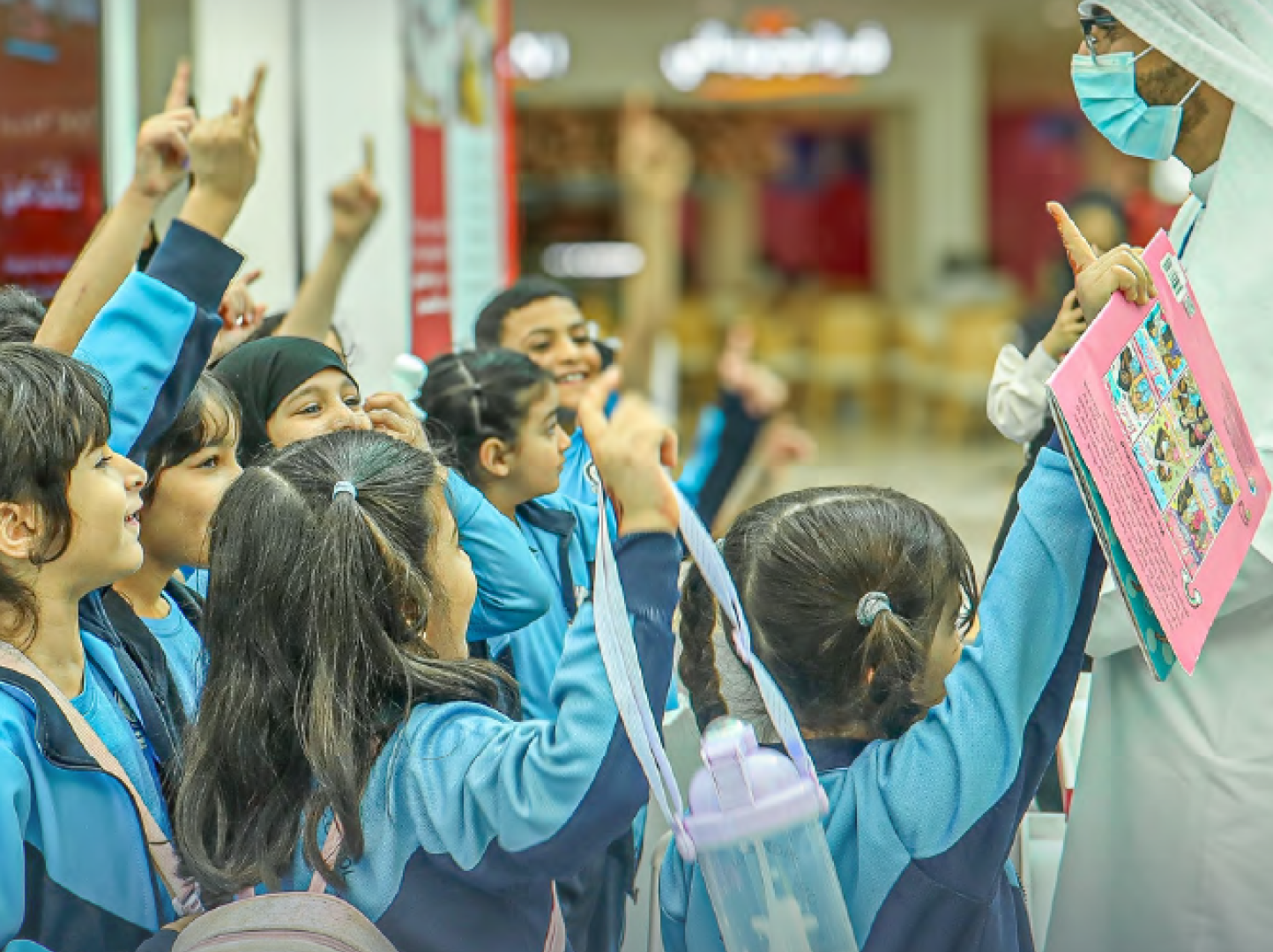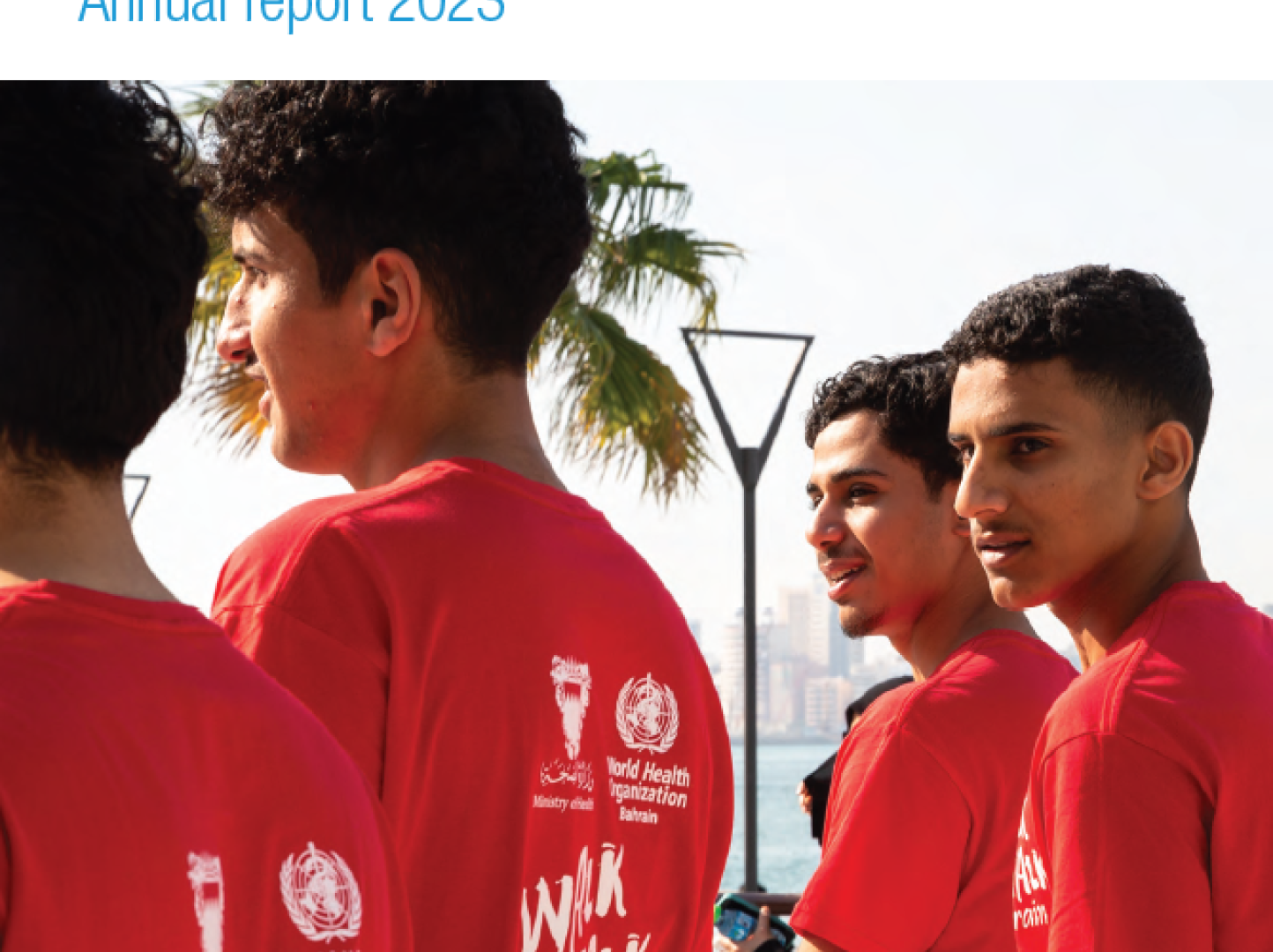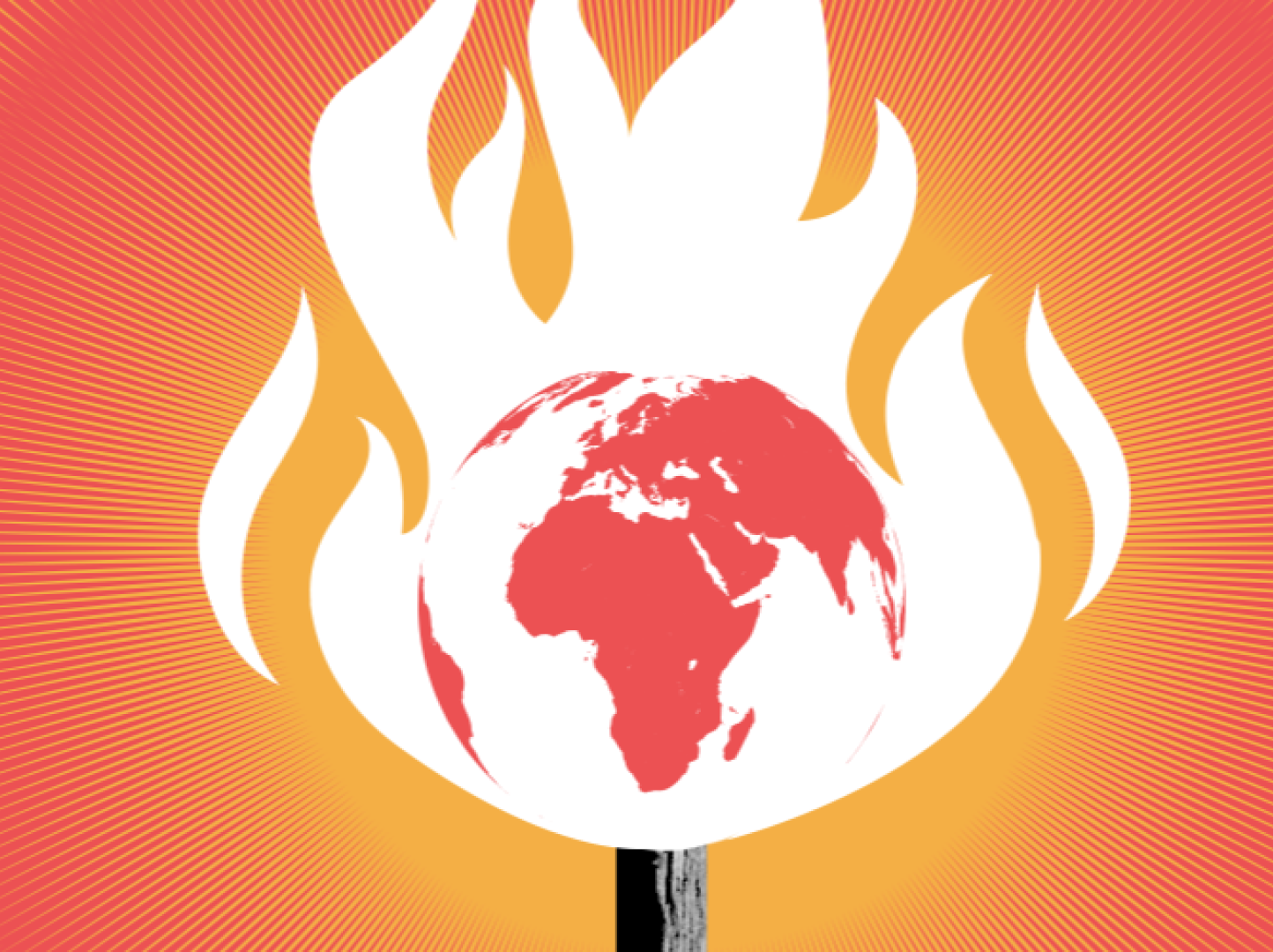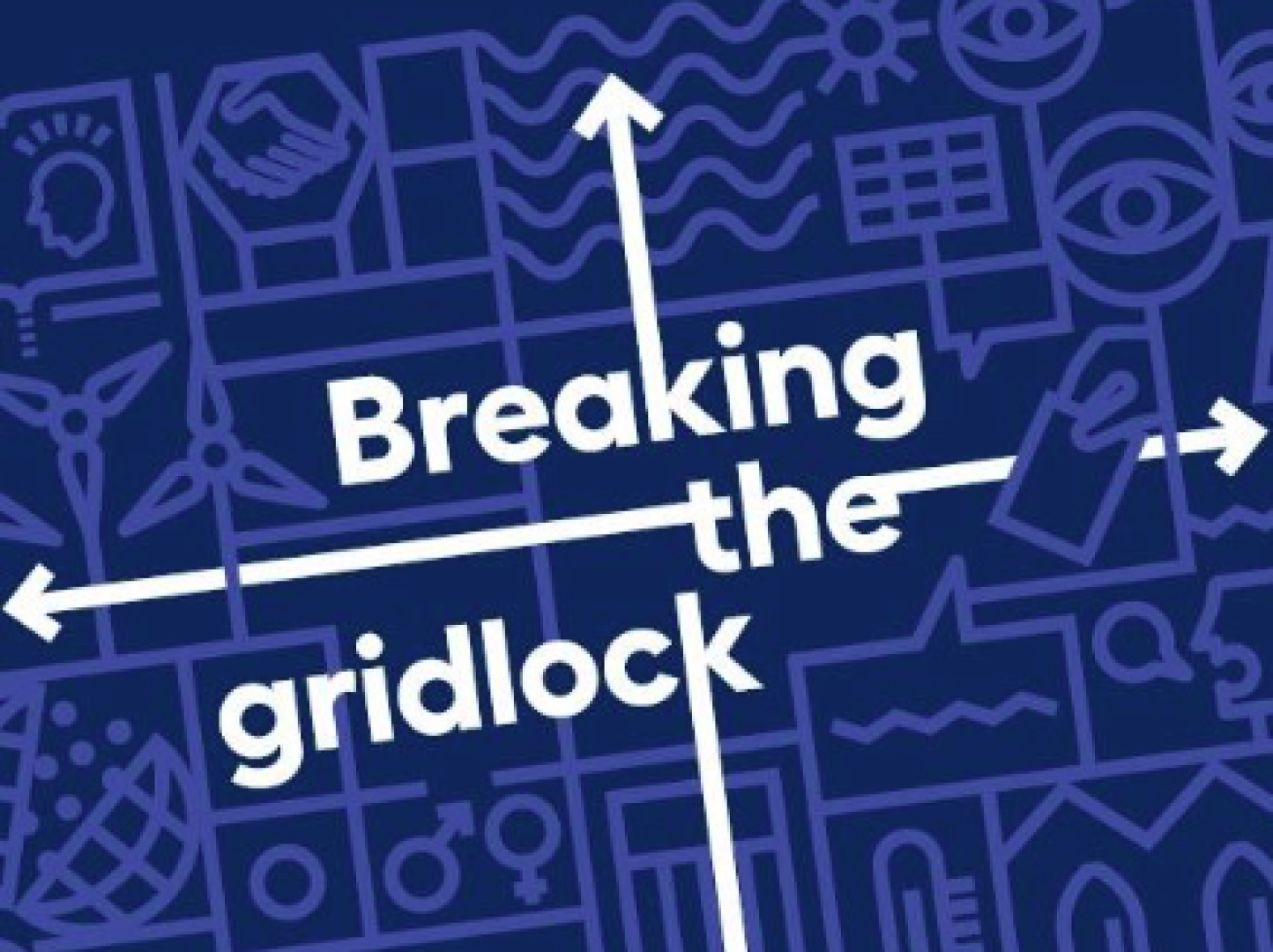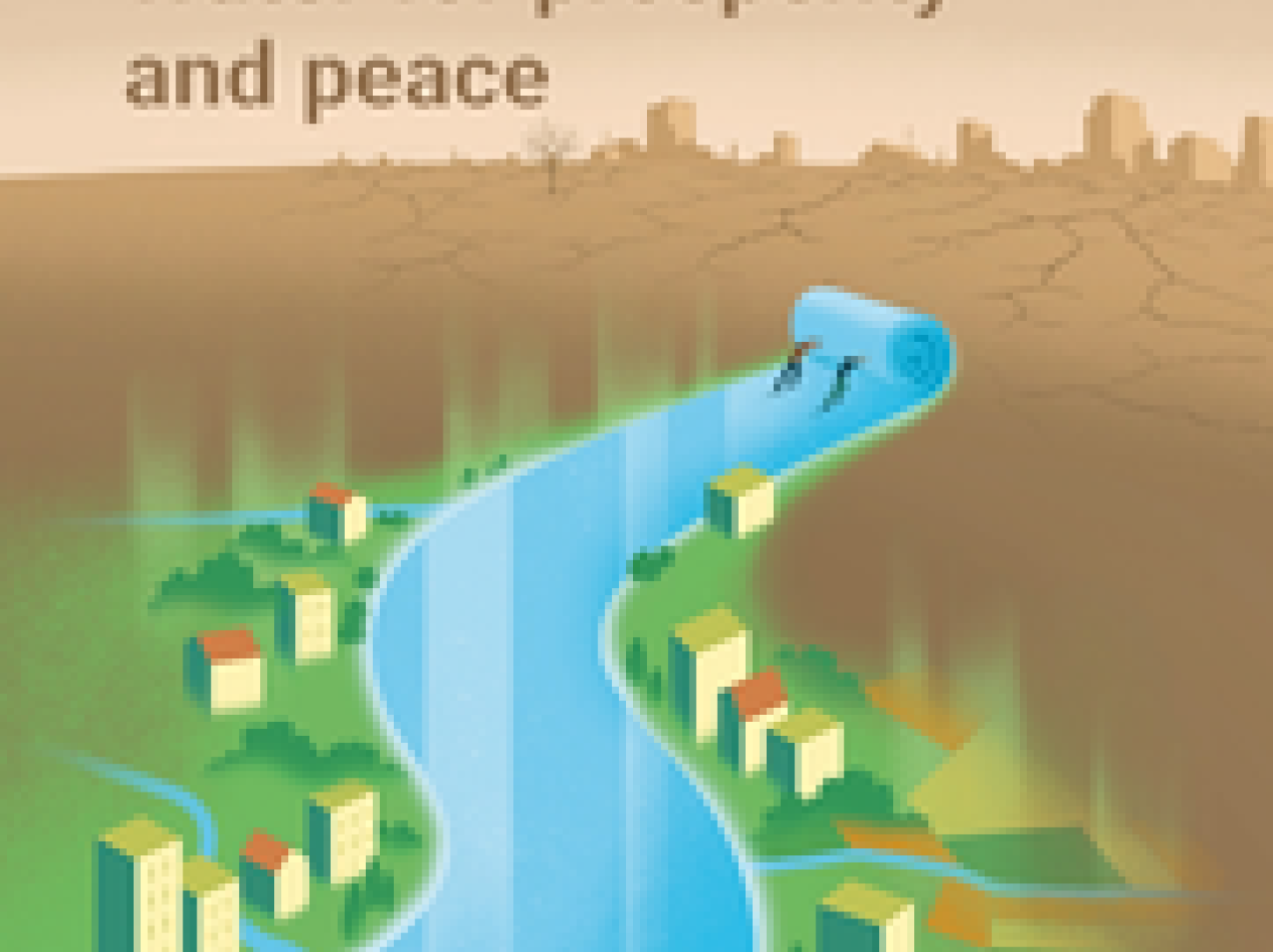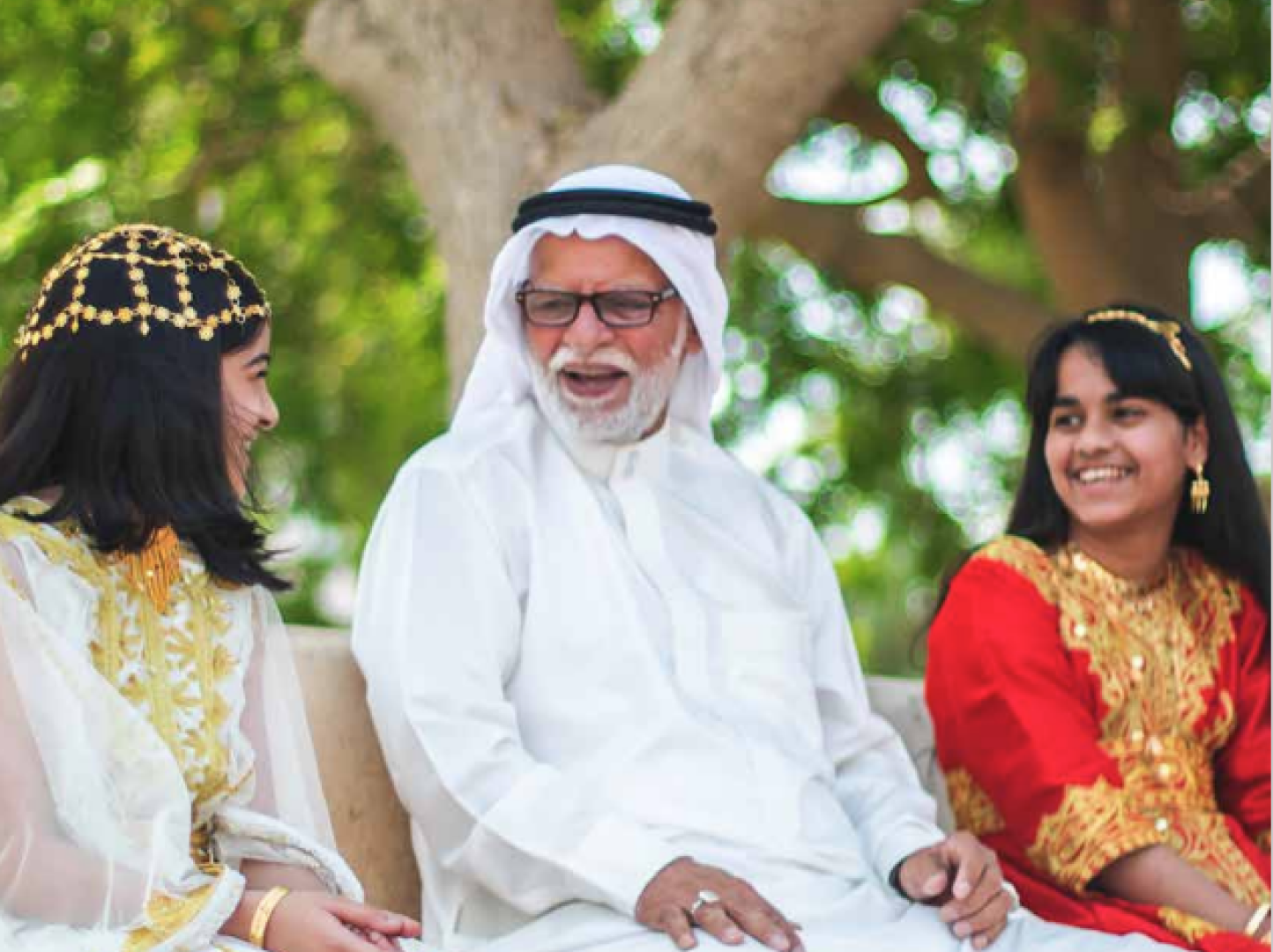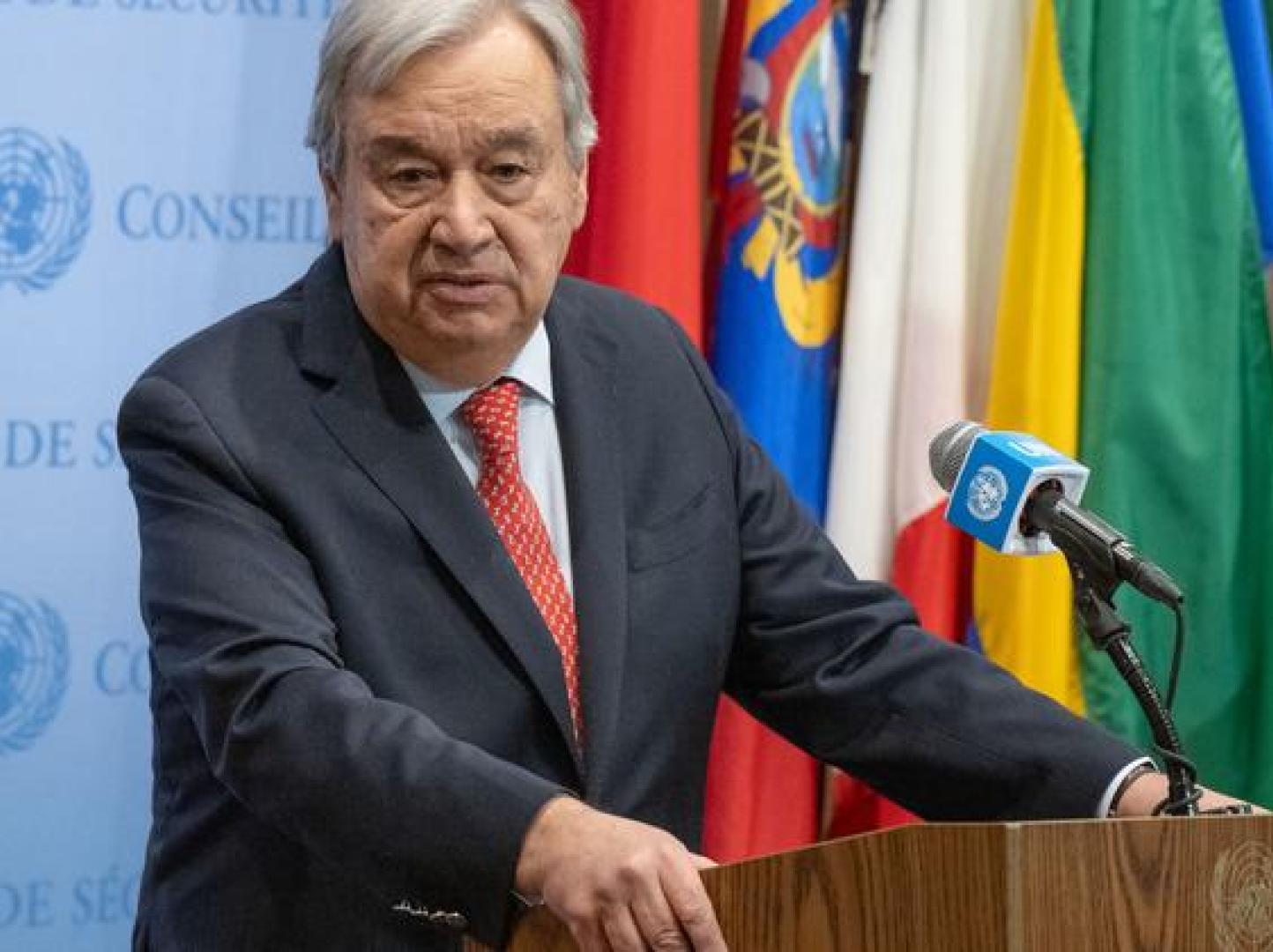Latest
Story
25 June 2025
Gaza: Over 400 Palestinians killed around private aid hubs, UN rights office says
Learn more
Story
23 June 2025
Gaza: UN warns of ‘weaponised hunger’ and growing death toll amid food chaos
Learn more
Story
19 June 2025
UN rights office ‘horrified’ by deadly violence at Gaza food distribution sites
Learn more
Latest
The Sustainable Development Goals in Palestine
The Sustainable Development Goals are a global call to action to end poverty, protect the earth’s environment and climate, and ensure that people everywhere can enjoy peace and prosperity. With 21 United Nations Entities represented in the Kingdom of Bahrain, the work of the United Nations encompasses all 17 SDGs.
Story
25 June 2025
Gaza: Over 400 Palestinians killed around private aid hubs, UN rights office says
At least 410 Palestinians have been killed by the Israeli military while trying to fetch from controversial new aid hubs in Gaza – a likely war crime – the UN human rights office, OHCHR, said on Tuesday.The alert comes nearly a month since the Israeli and US-backed Gaza Humanitarian Foundation (GHF) started operating on 27 May in select hubs, bypassing the UN and other established NGOs.Its food distribution points have been associated frequently with confusion and shooting as desperate and hungry Gazans rush to fetch supplies, said UN human rights office spokesperson Thameen Al-Keetan.“Israel’s militarized humanitarian assistance mechanism is in contradiction with international standards on aid distribution,” he insisted. “The weaponization of food for civilians, in addition to restricting or preventing their access to life-sustaining services, constitutes a war crime and, under certain circumstances, may constitute elements of other crimes under international law.”In its latest update on the emergency, the UN aid coordination office, OCHA, reported that “scores of people of all ages are being killed and injured every day” in the shattered enclave.“Humanitarian operations of sufficient scale are not facilitated, leaving unaddressed the critical needs of those who have so far survived,” it said. Shelled or shot In Geneva, meanwhile, OHCHR’s Mr. Al-Keetan explained that private aid hub victims were either “shelled or shot” by the Israel Defense Forces. They have endangered civilians and contributed to the “catastrophic humanitarian situation in Gaza”, he maintained.At least 93 people have also been reportedly killed by the Israeli army while attempting to approach the few remaining aid convoys of the UN and other aid partners still operating in Gaza.In a previous alert, the UN human rights office has condemned the possible summary execution of Palestinian staff associated with the Gaza Humanitarian Foundation by armed men allegedly affiliated with Hamas.“These killings must end immediately, and those responsible held to account,” the UN office said in a statement.Most vulnerable miss outThe OHCHR spokesperson noted that women and children, along with older people and those with disabilities continue to face “multiple challenges” accessing food in Gaza today.Looting of aid convoys is now commonplace in Gaza after more than 20 months of daily Israeli bombardment as a result of a near-total blockade on humanitarian supplies including food, fuel and medicine.The result is that Gaza’s most vulnerable individuals are unable to access any of this diverted aid, the UN human rights office told UN News.To date, at least 3,000 Palestinians have been injured in incidents associated with the non-UN aid hubs and looting.“Desperate, hungry people in Gaza continue to face the inhumane choice of either starving to death or risk being killed while trying to get food,” the UN human rights office explained.Ongoing aid obstaclesAlthough the UN and other aid providers still function in Gaza, they are reliant on the Israeli authorities to facilitate their missions. On Saturday and Sunday, only eight out of 16 requests for humanitarian operations were approved, aid teams reported.“Half of [the missions] were denied outright, hindering the tracking of water and fuel, the provision of nutrition services and the retrieval of the bodies,” said Alessandra Vellucci, Director of the Information Service at UN Geneva.Her comments followed a warning from the UN’s top aid official in Gaza on Sunday who described dire scenes and “carnage”.“It is weaponized hunger. It is forced displacement. It’s a death sentence for people just trying to survive. All combined, it appears to be the erasure of Palestinian life from Gaza,” said OCHA’s Head of Office in the Occupied Palestinian Territory, Jonathan Whittall.Telecommunications have now been restored across Gaza after damaged fibre cables were repaired at the weekend.“For the first time in days, humanitarian teams have had more than 24 hours of relatively stable connectivity – something that is essential to coordinate emergency relief and save lives,” OCHA said in Monday evening’s update.But without urgent fuel deliveries, telecommunications “will go down again very soon”, the UN aid wing warned.Fuel crisis“Fuel is also needed to keep emergency rooms running, power ambulances, and operate water desalination and pumping stations,” it explained.“Right now, teams on the ground are rationing what little fuel remains and working to retrieve stocks stored inside Gaza, in areas that are hard to reach.”Access to Nasser Medical Complex is also limited because there is not enough fuel for transportation “and health workers and patients fear for their safety”, OCHA continued.“Last week, in Khan Younis, in-patient admissions at field hospitals increased threefold, largely due to access challenges at Nasser, which also saw an influx of trauma patients and has been overwhelmed since.”Most of Gaza remains under displacement orders issued by the Israeli military, including another one on Monday for two neighbourhoods in Khan Younis city, reportedly following Palestinian rocket fire from these areas."These neighbourhoods were already subject to earlier displacement orders and include two hospitals – Al Amal and Nasser," OCHA said. "While Israeli authorities have clarified that the hospitals are not required to evacuate, OCHA says the designation is nonetheless hindering access to those critical facilities for both patients and medical staff.", filtered_html
1 of 5
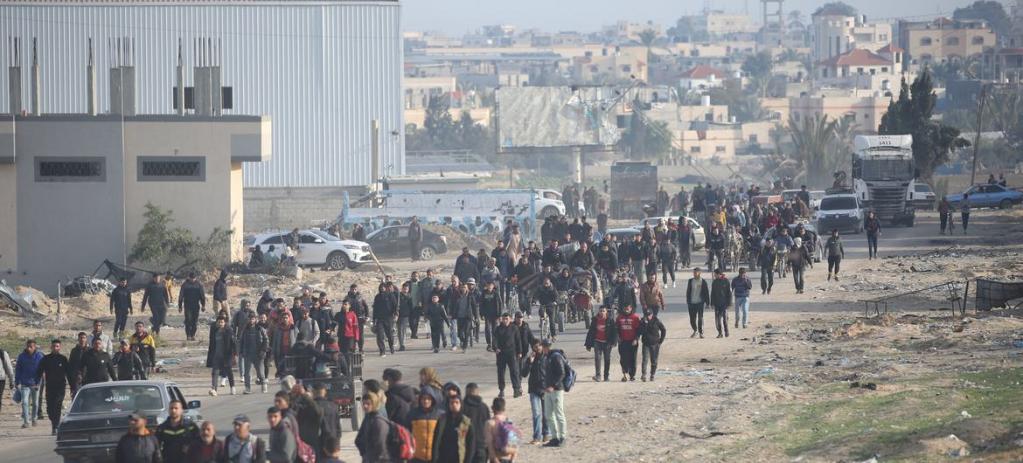
Story
23 June 2025
Gaza: UN warns of ‘weaponised hunger’ and growing death toll amid food chaos
The top UN humanitarian official in the Occupied Palestinian Territory has issued a stark warning over the deepening crisis in Gaza, where civilians are being killed daily while trying to access food, water and medical care.Speaking to journalists in Deir al Balah on Saturday, Jonathan Whittall, who heads the UN humanitarian coordination office (OCHA) in Gaza and the West Bank, said: “The attempt to survive is being met with a death sentence.”Since Israel eased its total blockade last month, more than 400 people are reported to have died trying to reach food distribution points.“We see a chilling pattern of Israeli forces opening fire on crowds gathering to get food,” Mr. Whittall said, noting many of these sites are in militarised zones. Others have been killed along access routes or while protecting aid convoys.“It shouldn’t be this way,” he said. “There shouldn’t be a death toll associated with accessing the essentials for life.”Empty warehouses, overwhelmed hospitalsConditions across Gaza continue to deteriorate. Water wells have run dry or are located in dangerous areas, sanitation systems have collapsed, and disease is spreading rapidly.“Our warehouses stand empty,” Mr. Whittall said. “Displaced families flee with nothing – and we have nothing to give them.”Partially functioning hospitals are overwhelmed by near-daily mass casualty events. Some have been directly hit, while others are choked by fuel shortages and forced evacuation orders.UNICEF reports more than 110 children are being treated for malnutrition every day. Mr. Whittall said humanitarian agencies are capable of reaching every family in the shattered enclave but are being systematically blocked. “We have a plan...but we are prevented from doing so at every turn.”Death sentenceHe described the situation as “weaponised hunger”, “forced displacement”, and “a death sentence for people just trying to survive”.“This is carnage,” Mr. Whittall said. “It appears to be the erasure of Palestinian life from Gaza.”He urged the international community to act: “We need a lasting ceasefire, accountability, and real pressure to stop this. This is the bare minimum.”, filtered_html
1 of 5
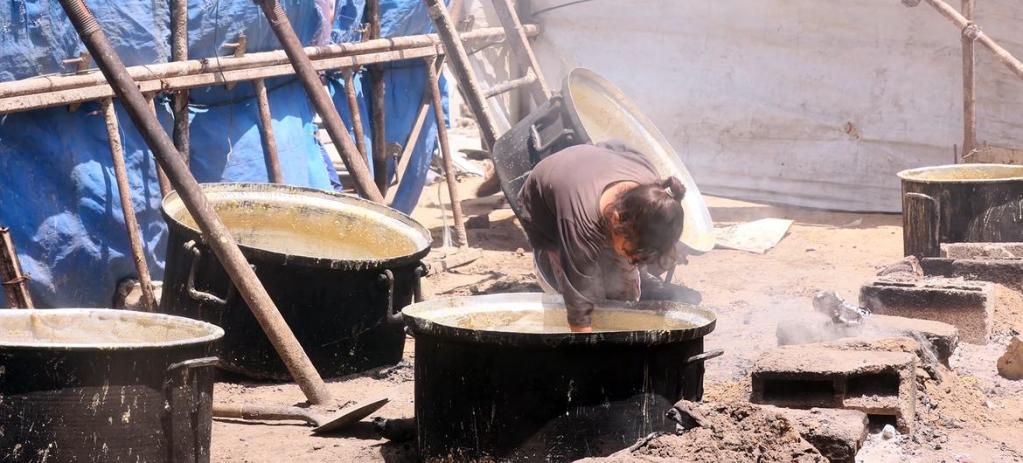
Story
19 June 2025
UN rights office ‘horrified’ by deadly violence at Gaza food distribution sites
As the pall of starvation hangs over Gaza, UN agencies have sounded the alarm over deadly violence at food distribution points, where over 400 Palestinians have reportedly been killed in recent weeks while trying to access desperately needed humanitarian aid.The UN human rights office (OHCHR) in the Occupied Palestinian Territory on Wednesday called on the Israeli military to cease the use of lethal force near aid convoys and food distribution sites.It cited “repeated incidents” of Palestinians being shot or shelled while seeking food, warning that such attacks could constitute war crimes under international law.“We are horrified at the repeated incidents, continuously reported in recent days across Gaza, and we call for an immediate end to these senseless killings,” the office said in a statement.Hundreds killedSince 27 May, when the Gaza Humanitarian Foundation (GHF), an initiative backed by Israel and the United States began food distribution in southern Gaza – bypassing the established UN-led system – hundreds have been killed and many more wounded near four distribution points or while waiting to pick up aid.In one of the deadliest recent incidents, Israeli military reportedly shelled a crowd waiting for UN food trucks in southern Gaza on 17 June, killing at least 51 people and injuring some 200 others, according to Gazan health authorities.A day earlier, three Palestinians were reportedly killed and several injured in a similar incident in western Beit Lahiya.“There is no information to suggest that the people killed or injured were involved in hostilities or posed any threat to the Israeli military or to staff of GHF distribution points,” OHCHR said. Protect civilians, aid workersThe UN World Food Programme (WFP), which has managed to dispatch only 9,000 metric tons of food within Gaza over the past month – a fraction of what is required for the 2.1 million people in need – echoed calls for immediate protection of civilians and aid workers.“Far too many people have died while trying to access the trickle of food aid coming in,” the agency said in a separate statement.“Any violence resulting in starving people being killed or injured while seeking life-saving assistance is completely unacceptable.”Massive scale-up neededThe UN emergency food relief agency said the fear of starvation and desperate need for food is causing large crowds to gather along well-known transport routes, hoping to intercept and access humanitarian supplies while in transit.“Only a massive scale-up in food distributions can stabilize the situation, calm anxieties and rebuild the trust within communities that more food is coming,” it said, calling urgently for safer convoy routes, faster permissions, restored communication channels and additional border openings.“The time to act is now. Delays cost lives. We must be allowed to safely do our jobs,” the agency said., filtered_html
1 of 5
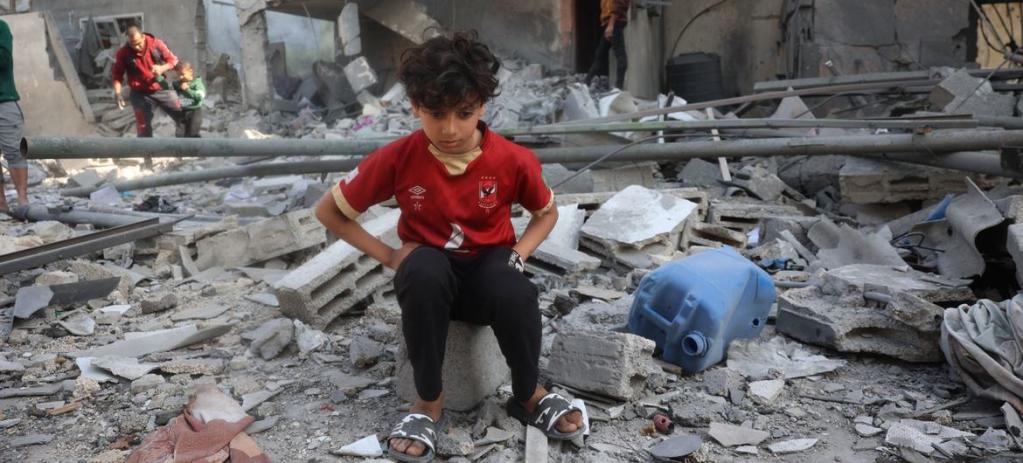
Story
18 June 2025
More Gazans killed trying to get food, healthcare near to ‘full disaster’
The UN World Health Organization (WHO) said. “We are walking the fine grey line between operational capacity and full disaster, every day,” said Dr Thanos Gargavanis, WHO trauma surgeon and emergency officer, speaking from the enclave.The veteran UN medic’s comments came amid new reports on Tuesday morning that more Palestinians had been killed trying to access food, this time near an aid distribution site in Khan Younis in southern Gaza.The mass casualty event left “hundreds of casualties, completely overwhelming Nasser Medical Complex” in Khan Younis, said WHO’s Representative in the occupied Palestinian territory, Dr Rik Peeperkorn.No-go zoneAcross Gaza today, health services are “barely available” and difficult to access, Dr Peeperkorn said, since more than 80 per cent of Gaza’s territory is under evacuation orders.“The shrinking humanitarian space makes every health activity way more difficult than the previous day,” Dr Gargavanis added.Nasser Medical Complex is the largest referral hospital in Gaza and the only remaining main hospital in Khan Younis. It is situated within the evacuation zone announced by the Israeli military on 12 June.The nearby Al-Amal Hospital - operated by the Palestinian Red Crescent Society (PRCS) - continues to provide services to patients already there, but it is unable to admit anyone else because of ongoing military operations.“It is what we call a completely minimal functional hospital,” Dr Peeperkorn said.Deadly impact of fuel shortagesOnly 17 of Gaza’s 36 hospitals are currently partially functional, medical supplies are critically low and no fuel has entered the Strip for more than 100 days.The latest mass casualty event is just the latest involving Gazans trying to access aid amid ongoing severe restrictions placed on the amount of aid allowed into the Strip by Israel.On Monday, more than 200 patients arrived at the Red Cross Field Hospital in Al Mawasi - the highest number received by the facility in a single mass casualty incident. Of that number, 28 patients were reportedly declared dead, WHO’s Dr Peeperkorn said.Just one day earlier, on 15 June, the same hospital received at least 170 patients, who reportedly had been trying to access a food distribution site.“The recent food distribution initiatives by non-UN actors every time result in mass casualty incidents,” WHO’s Dr Gargavanis insisted.Private aid plan falloutSince late May, the UN and humanitarian partners have been sidelined in Gaza as a new aid distribution model backed by Israel and the United States began operations under the framework of the Gaza Humanitarian Foundation (GHF), which uses private military contractors. The WHO trauma surgeon highlighted a “constant correlation” between the locations of food distribution spots and the mass casualty incidents in Rafah, in Khan Younis and along the Netzarim corridor.Asked about the type of injuries sustained by those seeking aid, and who is responsible, Dr Garavanis stressed that WHO is not a forensic agency.“We're not in a position to clearly identify from the nature of the injury” who has caused it, he said. “What we can say, though, is that we're talking of gunshot wound injuries, and we're talking of very few incidents of shrapnel injuries.”The UN has repeatedly warned that the new aid distribution system does not meet humanitarian principles of humanity, impartiality, independence and neutrality. The global body has also called for aid restrictions to be lifted.Dr Peeperkorn insisted that the WHO must be facilitated to move supplies into Gaza in a cost-effective manner “via all possible routes” to prevent further shutdowns of medical services. He said that 33 WHO trucks with supplies are waiting at Al Arish in Egypt to be granted passage into the enclave, with another 15 standing by in the occupied West Bank., filtered_html
1 of 5
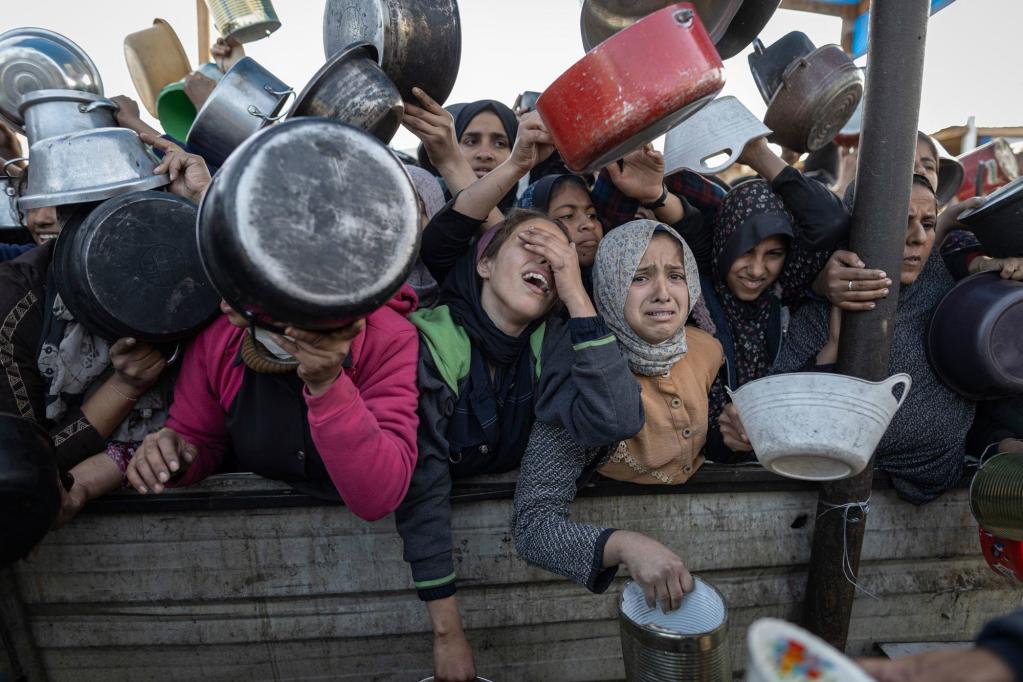
Story
11 June 2025
Israeli attacks on Gaza schools could be crimes against humanity: UN probe
A UN investigative body said on Tuesday, as humanitarian agencies warned of continued mass suffering across the Strip.The UN Human Rights Council-mandated Independent International Commission of Inquiry (COI) report found that Israeli forces have used airstrikes, shelling, burning, and controlled demolitions to damage or destroy more than 90 per cent of schools and university buildings across Gaza.This destruction in the wake of the 7 October 2023 Hamas-led terror attacks on Israel has made education impossible for over 658,000 children, many of whom have been out of school for nearly two years.“We are seeing more and more indications that Israel is carrying out a concerted campaign to obliterate Palestinian life in Gaza,” said Navi Pillay, Chair of the Commission.“Israel’s targeting of the educational, cultural and religious life of the Palestinian people will harm the present generations and generations to come, hindering their right to self-determination.”Classroom-turned military baseThe COI documented cases where Israeli forces seized and used educational institutions as military bases, including the conversion of part of Al-Azhar University’s Al-Mughraqa campus into a synagogue for troops.The report also noted one instance where Hamas militants used a school for military purposes. Such conduct is a breach of international humanitarian law, which mandates the distinction between civilian objects and military targets.Targeting of religious sitesMore than half of Gaza’s religious and cultural sites have been damaged or destroyed, including places serving as refuges for civilians – killing hundreds, including women and children.The Commission stated that Israeli forces knew or should have known the cultural significance of these sites and failed to prevent harm.In the occupied West Bank, including East Jerusalem, Israeli authorities appropriated, developed and profited from cultural heritage sites representing Palestinian, Jewish and other cultures, while displaced Palestinian residents.They have also blocked or severely restricted Palestinians from accessing the sites.“Attacks on cultural and religious sites have deeply impacted intangible culture, such as religious and cultural practices, memories and history,” said Ms. Pillay.“The targeting and destruction of heritage sites, the limiting of access to those sites in the West Bank and the erasure of their heterogenic history erode Palestinians’ historical ties to the land and weaken their collective identity.”RecommendationsThe Commission called on Israel to immediately cease attacks on cultural, religious, and educational institutions and to end the seizure and military use of such facilities. It urged Israel to end its occupation and settlement activities, especially near religious and cultural sites, and to comply fully with International Court of Justice (ICJ) orders.Investigators also urged Palestinian authorities to protect and preserve cultural heritage sites, including those of diverse origins, calling on de facto authorities in Gaza to stop using civilian objects for military purposes.Humanitarian crisis spirallingUN agencies continue to warn of a worsening humanitarian crisis in Gaza.The UN Children’s Fund (UNICEF) highlighted the case of a five-year-old malnourished child whose recovery depends on adequate food and sustained care.“Aid at scale must be allowed into Gaza for children’s health and survival,” the agency urged.‘Another day of death traps’Philippe Lazzarini, head of the UN agency assisting Palestine refugees, expressed deep concern over delays and obstacles in aid delivery, urging Israel to allow the UN safe and unhindered access to bring in supplies and distribute it safely.“This is the only way to avert mass starvation including among one million children,” he said.Mr. Lazzarini warned that casualties and injuries continue to be reported daily at US-backed distribution points managed by Israeli and private security forces – creating in effect, daily death traps.He described the system as humiliating, forcing thousands of hungry and desperate people to walk tens of miles, while excluding the most vulnerable and those living too far from aid centres.Food aid disruptedThe UN World Food Programme (WFP) reported that 59 trucks carrying essential wheat flour to northern Gaza were intercepted and offloaded by starving civilians desperate to feed their families.A second convoy of 21 trucks bound for southern Gaza faced a 36-hour delay awaiting clearances.As of 10 June – nearly three weeks after the limited resumption of aid – WFP transported over 700 trucks to the Kerem Shalom crossing, compared to 600-700 trucks of aid transported per day during the ceasefire earlier this year.“To stave off starvation, stabilize markets and calm desperation, we need to consistently support the entire population with basic food requirements every month,” WFP said.Insecurity and lawlessness in Gaza have also led to trucks being looted, injuring drivers and damaging trucks.WFP called for faster approvals, safe routes and open crossings, as well as an urgent ceasefire, to allow it to reach those in need.“The food aid brought into Gaza during the ceasefire helped to push back the tide of hunger. We can do this again.”, filtered_html
1 of 5
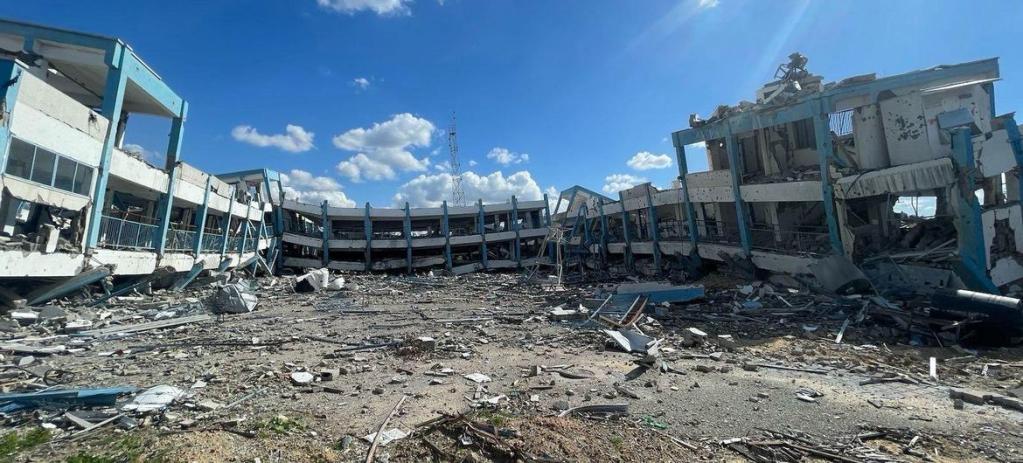
Story
10 June 2025
Gaza: Search for food puts lives on the line
The UN said, amid more reports of people being killed and injured near newly-established distribution sites. Since the end of May, aid distribution in Gaza has been carried out by a mechanism backed by Israel and the United States bypassing UN agencies and their established partners, which has been plagued by deadly incidents and chaos.On Monday, UN partner the International Committee of the Red Cross (ICRC) reported that 29 casualties arrived at its field hospital in west Rafah that morning, eight of whom had died. Almost all had explosive trauma wounds, with two others suffering gunshot wounds. Forced to choose“The UN reiterates that civilians must always be protected,” said Deputy Spokesperson Farhan Haq, speaking from Headquarters in New York.“No person, anywhere, should be forced to choose between risking one’s life and feeding one’s family.” Fuelling aid effortsMeanwhile, fuel stocks in Gaza are dangerously low, putting further strain on critical services and humanitarian operations. Mr. Haq said that some 260,000 litres of fuel were looted in northern Gaza over the weekend.Prior to this, the UN had repeatedly tried to reach these stocks to retrieve them, but the Israeli authorities denied these attempts – with 14 denials since 15 May. “Our attempts to reach fuel supplies in Rafah, in the south of Gaza, also continue to be denied,” he added.“The UN warns that unless a solution is found in the coming days, the entire aid operation could come to a standstill.”‘Desperate, starving people’Mr. Haq also updated on efforts to bring desperately needed humanitarian assistance into the Gaza Strip, where the entire population, more than two million people, faces famine conditions.On Monday, the UN led a mission to deliver supplies that entered the enclave via the Kerem Shalom border crossing to Gaza City, which was still ongoing. Since Israel allowed limited amounts of aid to enter on 19 May, the UN and partners have only been able to collect about 4,600 metric tonnes of wheat flour from Kerem Shalom.“Most of it was taken by desperate, starving people before the supplies reached their destinations. In some cases, the supplies were looted by armed gangs,” he said.Resume aid flow nowMr. Haq emphasized that as the occupying power, Israel bears responsibility when it comes to public order and safety in Gaza. “That should include letting in far more essential supplies, through multiple crossings and routes, to meet humanitarian needs and help reduce looting,” he said.UN partners working on food security estimate that between 8,000 and 10,000 metric tonnes of wheat flour is required to reach all families across Gaza with at least a single bag.He stressed that “the sustained and unrestricted flow of aid into Gaza must resume as soon as possible.” Dangerous routes, driver shortages and delaysHe said no missions to collect supplies from Kerem Shalom took place at the weekend as Israel informed that the crossing would remain closed on Friday and Saturday.Humanitarians also continue to face major impediments that affect their ability to conduct these operations, including unacceptably dangerous routes, a severe shortage of vetted drivers, and delays.West Bank updateMr. Haq also touched on the situation in the occupied West Bank.He said operations by the Israeli forces in the north have continued over the past week, destroying roads and disrupting Palestinians’ access to essential services. The UN and partners continue to respond, including by providing water, sanitation and hygiene assistance to tens of thousands of displaced Palestinians. , filtered_html
1 of 5

Story
05 June 2025
US vetoes Security Council resolution demanding permanent ceasefire in Gaza
A draft resolution calling for an immediate and permanent ceasefire in Gaza failed to pass in the UN Security Council on Wednesday after the United States cast its veto – blocking the initiative backed by all ten elected members of the Council.The text, co-sponsored by Algeria, Denmark, Greece, Guyana, Pakistan, Panama, the Republic of Korea, Sierra Leone, Slovenia, and Somalia – collectively known as the E-10 – received 14 votes in favour, with the US casting the lone vote against.As one of the council’s five permanent members, the US holds veto power – a negative vote that automatically blocks any resolution from going forward.Had it been adopted, the draft would have demanded “an immediate, unconditional and permanent ceasefire in Gaza” to be respected by all parties.Release all hostagesThe text reaffirmed the Council’s earlier call for the “immediate, dignified and unconditional release of all hostages held by Hamas and other groups.”The draft also expressed grave concern over the “catastrophic humanitarian situation” in Gaza – following more than the months of almost total Israeli aid blockade – including the risk of famine, highlighted by recent international food security assessments.It reaffirmed the obligation of all parties to comply with international law, including international humanitarian and human rights law.Resume flow of aidIn addition to a ceasefire, the draft resolution demanded the “immediate and unconditional lifting of all restrictions” on the entry and distribution of humanitarian aid in Gaza, calling for safe and unhindered access for UN and humanitarian partners across the enclave.It also urged the restoration of essential services, in accordance with humanitarian principles and prior Security Council resolutions.The text voiced support for ongoing mediation efforts led by Egypt, Qatar, and the United States to revive the phased ceasefire framework outlined in resolution 2735 (2024), which envisions a permanent cessation of hostilities, the release of all hostages, the exchange of Palestinian prisoners, the return of all remains, full Israeli military withdrawal from Gaza, and the start of a long-term reconstruction plan.Draft resolution unacceptable: United StatesSpeaking ahead of the vote, acting US Representative Dorothy Shea described the draft resolution as “unacceptable”. “US opposition to this resolution should come as no surprise – it is unacceptable for what it does say, it is unacceptable for what it does not say, and it is unacceptable for the manner in which it has been advanced,” she said.“The United States has been clear,” she continued, “we would not support any measure that fails to condemn Hamas and does not call for Hamas to disarm and leave Gaza.”She added that Hamas has rejected numerous ceasefire proposals, including one over the weekend that would have provided a pathway to end the conflict and release the remaining hostages.“We cannot allow the Security Council to award Hamas’ intransigence,” Ms. Shea said, stressing, “Hamas and other terrorists must have no future in Gaza. As Secretary [Marco] Rubio has said: ‘If an ember survives, it will spark again into a fire’.” ‘The world is watching’The failure of the resolution comes as the humanitarian crisis in Gaza deepens, with UN agencies warning of the total collapse of health services, growing displacement, and a rising death toll around the new privatized US-Israel led aid distribution system which bypasses established agencies.“The world is watching, day after day, horrifying scenes of Palestinians being shot, wounded or killed in Gaza while simply trying to eat,” said UN relief chief Tom Fletcher earlier on Wednesday., filtered_html
1 of 5
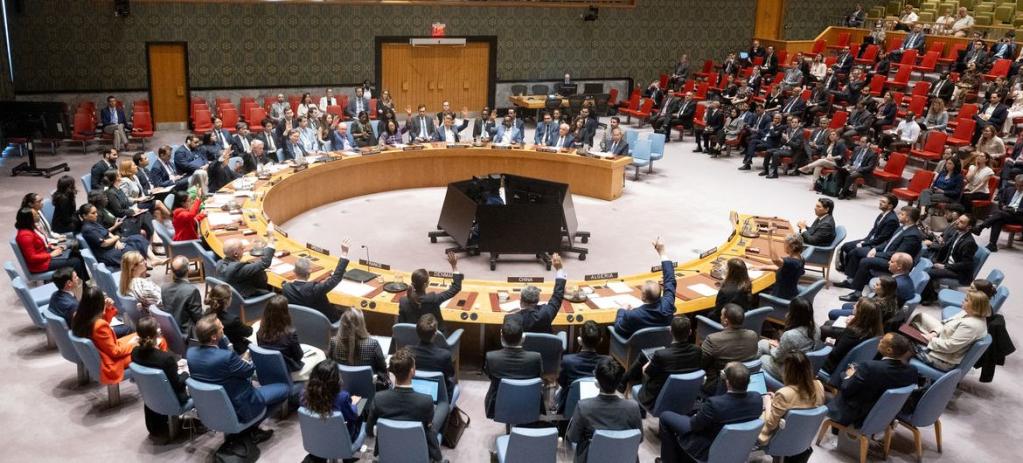
Story
05 June 2025
Gaza: UN relief chief welcomes growing support for aid teams to resume vital work
Amid reports of yet another deadly attack on a school in Gaza on Wednesday, the UN’s top aid official Tom Fletcher welcomed growing international calls for lifesaving aid work by established agencies to resume in the war-torn enclave.“We value the support of more and more Member States who are joining our call: Let us work,” Mr. Fletcher said, his comments coinciding with the announcement that the US and Israeli-backed aid hub in southern Gaza operating independently of the UN had been suspended on Wednesday.“The world is watching, day after day, horrifying scenes of Palestinians being shot, wounded or killed in Gaza while simply trying to eat,” Mr. Fletcher said.New Security Council resolutionThe development comes ahead of a Security Council meeting on Gaza on Wednesday seeking agreement on a draft resolution calling for an immediate ceasefire and the release of all remaining hostages taken during Hamas-led terror attacks in Israel on 7 October 2023.The resolution push is the result of lobbying by the body’s 10 non-permanent Members. It remains to be seen if it will garner the support of the US and the four other countries that hold just five permanent seats on the 15-Member body: China, France, the UK and Russia. Any one of them could veto it.Meanwhile in Gaza, local authorities on Wednesday claimed that at least 12 people including children had been killed in an Israeli strike on a school-turned-shelter in the southern city of Khan Younis.In his appeal, Mr. Fletcher noted that medical teams had confirmed treating “hundreds of trauma cases” in recent days after footage showed chaotic scenes of Palestinians rushing to take food from the US and Israeli-run aid hubs in southern Gaza.“Yesterday alone, dozens were declared dead at hospitals after Israeli forces said they had opened fire,” Mr. Fletcher continued.He insisted: “Open the crossings – all of them. Let in lifesaving aid at scale, from all directions. Lift the restrictions on what and how much aid we can bring in. Ensure our convoys aren’t held up by delays and denials.”Health system crumblingMr. Fletcher also warned that the crisis in Gaza is the result of “a series of deliberate choices” that have left two million people deprived of the essentials they need to survive.He urged Israel to open all crossings into the war-torn enclave, lift restrictions on aid, and allow safe and sustained access for humanitarian convoys.According to the UN relief wing, OCHA, more than 100,000 people have been newly displaced in the Gaza Strip over the past three weeks, as access to health services continues to deteriorate.The Indonesian Hospital in the north was evacuated earlier this week, leaving no functional hospitals in the northern governorate.In Gaza City, UN’s Deputy Humanitarian Coordinator Suzanna Tkalec visited Al Ahli Hospital, where staff said preventable deaths are occurring due to shortages of antibiotics and other critical supplies. Challenges accessing aidMeanwhile, the UN and its partners continue to send supplies to Kerem Shalom crossing, where the Israeli authorities scan them before they can enter Gaza, a UN spokesperson said.“For today, we submitted over 130 pre-cleared truckloads for a second and final Israeli clearance, but only 50 of them – which were carrying flour – were approved to enter the Israeli side of the Kerem Shalom crossing,” Stéphane Dujarric told journalists at a regular briefing at the UN Headquarters, in New York.UN teams on the ground are also working hard to collect supplies from Kerem Shalom and bring them closer to the people who need them inside Gaza, he added, noting however that these attempts are facing major hurdles.“Just yesterday, one attempt was denied access altogether and another one did manage to retrieve just over a dozen truckloads carrying flour. Overall, since the crossing reopened, we’ve been able to collect fewer than 400 truckloads, even though every day we have tried to coordinate access and secure safe routes through the Israeli-militarized zone in the south.” , filtered_html
1 of 5
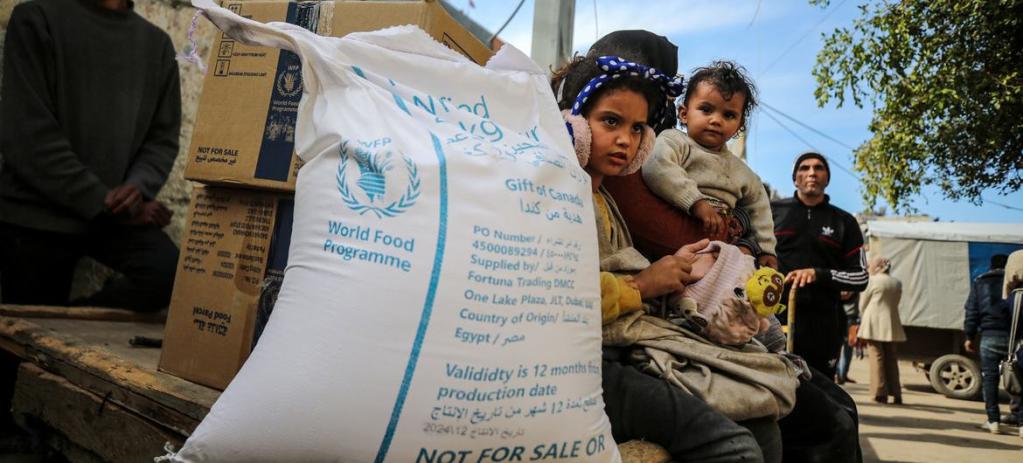
Story
04 June 2025
Gaza: UN rights chief condemns new killings around private aid hub
UN human rights chief Volker Türk has condemned new reports that dozens more Gazans were killed early Tuesday “trying to access paltry amounts of food” around a private aid hub in the south of the enclave run by the US and Israel.“Attacks directed against civilians constitute a grave breach of international law and a war crime,” the High Commissioner said in a statement, issued after Palestinians were reportedly killed seeking assistance for a third day running.Mr. Türk also urged Israel to respect “binding orders” issued by the International Court of Justice to fully cooperate with the UN and ensure that aid reaches the people of Gaza “without delay” and “at scale”.“There is no justification for failing to comply with these obligations,” he said.UN Spokesperson Stéphane Dujarric said Secretary-General António Guterres condemned the loss of lives and injuries of Palestinians seeking aid, which are "unacceptable,” and continues to call for an independent investigation into the incidents.“Once again, we are witnessing unthinkable loss of life in Gaza," he told journalists in New York. “Civilians are risking – and in several instances losing – their lives to get food.” Access calls deniedThe controversial new aid initiative run by the Gaza Humanitarian Foundation bypasses the work of UN aid agencies which have repeatedly appealed for unimpeded access to Gaza in order to bring in thousands of tonnes of supplies. To date, the little aid that has been allowed into the enclave has fallen far short of what is needed.In an update, the UN World Health Organization (WHO) insisted that it still had “teams on the ground” in Gaza ready to distribute supplies where they are needed across the war-torn enclave, if only they could be allowed to move.“We have right now 51 trucks waiting loaded with medical supplies to go to those few hospitals that are still functional,” said WHO spokesperson Tarik Jasarevic. “We need access so that we can bring in supplies within Gaza to health facilities so they can function. Unfortunately, what is happening is just the opposite. There is no hospital in north Gaza functional anymore.”On Monday, Mr. Jasarevic said that a WHO team went to the Indonesian Hospital in northern Gaza “and basically evacuated all remaining patients and medical staff…now that hospital is completely empty”. In Jabalia, also in northern Gaza, three Israeli soldiers were reportedly killed on Monday when their vehicle struck an explosive device.Most vulnerable miss outCritics of the US-Israeli scheme - which include the UN - have warned that it prevents children, the elderly and those with disabilities from receiving aid, since recipients often have to walk long distances to retrieve boxes of supplies distributed on a first-come, first-serve basis.“The wilful impediment of access to food and other life-sustaining relief supplies for civilians may constitute a war crime,” Mr. Türk said.His lengthy statement also condemned “the threat of starvation” faced by Gazans today, the “20 months of killing of civilians and destruction on a massive scale”.Gazans have also been repeatedly displaced by evacuation orders from the Israeli military and faced “intolerable, dehumanizing rhetoric and threats by Israel’s leadership to empty the Strip”, the UN rights chief noted. All of these facts constitute elements of the most serious crimes under international law, he insisted.‘Am I going to get shot?’Jeremy Laurence, spokesperson for the UN human rights office, OHCHR, highlighted the High Commissioner’s call for a prompt, independent investigation into the dozens of reported killings in Gaza since the new aid hub opened on 27 May.“I think there's so much which has happened in the past three days apart from the tragic circumstances of human beings trying to gather food to survive and then being killed in the process,” he told journalists in Geneva. “[Gazans] are being forced to walk to these centres and now they're terrified. Probably they go there and they're thinking, ‘Am I going to get food or am I going to get shot?’”Mr. Laurence noted multiple media reports on killings around the southern Gaza aid hub in recent days indicating engagement by helicopters, naval vessels, tanks and ground troops.“We are aware of those reports,” he said, noting that the Israel Defense Forces (IDF) had also published an account on X of what had happened on Tuesday.“My colleagues who are working on the ground have conducted interviews with witnesses and they do report fire from the IDF on those trying to access the food distribution centres. We've received reports from other organizations on the ground to a similar effect.”He added: “We've gathered our own information; we've spoken to witnesses on the ground who have shared what they have seen, heard and felt themselves.”Asked to explain what the High Commissioner meant when he expressed concerns that the “most serious crimes under international law” may have been committed, Mr. Laurence explained that this referred to war crimes, crimes against humanity and genocide.Young lives in dangerMeanwhile, humanitarians report a sharp rise in child labour and early marriage in Gaza, as well as family separation – all driven by hunger, displacement and economic turmoil.“Children are increasingly exposed to violence and exploitation during chaotic distributions of basic supplies – including in crowds, when people take flour directly from trucks,” said Mr. Dujarric, the UN Spokesperson, noting that children with disabilities are often the worst affected.Israel also issued another displacement order on Monday covering four neighbourhoods in Khan Younis, affecting some 45,000 people.Aid ‘still just a trickle’Mr. Dujarric said the UN and partners continue to make the most of the limited opening for aid delivery which began last month following nearly 80 days of blockade.“But as we’ve said before, what’s coming in – and if it does come in - is still just a trickle and does not meet the immense needs on the ground,” he remarked.“We have enough supplies lined up and ready, close to Gaza. But only limited amounts are actually reaching the people who need them, and that’s because of conditions on the ground.”In particular, the UN humanitarian affairs office OCHA warns of bottlenecks in the Kerem Shalom border crossing, the only one Israel allows for aid into Gaza.He said that since 17 May, only half of the pre-cleared supplies submitted for a second and final clearance by Israel has made it through to the Palestinian side of the crossing.“In total, the UN and our partners submitted over 1,200 pre-cleared truckloads for final Israeli clearance,” he said. Just over 920 truckloads were approved and some 620 have made it to the Palestinian side.Of the supplies scanned in Kerem Shalom - which include flour as well as medical and nutrition items - UN teams have managed to collect about 370 truckloads and bring them inside Gaza. Mr. Dujarric explained that access to the crossing “requires driving through militarized zones where bombings are continuing” and UN teams have to follow routes that are approved by the Israeli authorities.“Yesterday, 10 of 13 attempts to coordinate such movements were rejected. And those included the collection of supplies from Kerem Shalom, but also other life-saving operations such as trucking water to North Gaza or relocating fuel stocks to where they are needed,” he said. , filtered_html
1 of 5

Story
03 June 2025
Gaza: Guterres urges probe into killings at food distribution sites
More than 30 people were killed and over 100 wounded while waiting in the morning to get food from two sites in Rafah and Middle Gaza run by the newly established Gaza Humanitarian Foundation (GHF), according to media reports.The organization is backed by Israel and the United States and uses private US security contractors supervised by the Israeli military. Aid distributions began at the end of May, bypassing the UN and other humanitarian agencies.Risking their livesUN chief António Guterres issued a statement on Monday saying he was “appalled” by the reports.“It is unacceptable that Palestinians are risking their lives for food,” he said.“I call for an immediate and independent investigation into these events and for perpetrators to be held accountable."He stressed that Israel has clear obligations under international humanitarian law to agree to and facilitate humanitarian aid. Allow UN operations“The unimpeded entry of assistance at scale to meet the enormous needs in Gaza must be restored immediately,” he said.“The UN must be allowed to work in safety and security under conditions of full respect of humanitarian principles.Meanwhile, the Secretary-General continues to call for an immediate permanent, sustainable ceasefire in Gaza and the immediate and unconditional release of all hostages.“This is the only path to ensuring security for all. There is no military solution to the conflict,” he insisted.Lift aid restrictionsThe UN has repeatedly called for the full lifting of restrictions on aid and other essentials to meet the immense needs in the Gaza Strip, where more than two million people are at risk of famine following some 20 months of war and a near total three-month aid blockade.Israel recently lifted the ban temporarily, allowing UN agencies to bring in limited quantities of baby formula, flour, medicines and other assistance through the Kerem Shalom border crossing until the GHF became operational.The Secretary-General and other senior officials have repeatedly stated that the UN will not participate in any aid plan that does not respect international law and the humanitarian principles of humanity, impartiality, independence and neutrality. Worsening conditionsThe UN humanitarian affairs office OCHA said on Monday that the situation on the ground continues to worsen by the day, pointing to the mass casualties at the two distribution sites as well as ongoing attacks against health facilities.The Noura Al Kaabi Centre for dialysis in North Gaza was reportedly hit on Sunday, the agency said. Moreover, the Gaza health authorities report that 40 per cent of dialysis patients in the enclave have died since the escalation of hostilities in October 2023 because centres were either struck or unreachable.New displacement order“As hostilities continue, people have once again been forced to flee,” OCHA said.On Saturday, Israel issued another displacement order in Khan Younis and Deir Al-Balah, affecting around 100,000 people living in more than 200 displacement sites. Humanitarians estimate that since 18 March, more than 640,000 people have been displaced in Gaza, or nearly a third of the population.“The latest displacement order also deprived at least 8,000 students of learning, as tens of functioning temporary learning spaces and a dozen public schools had to suspend their operations,” OCHA added.Child malnutrition and looting The UN and partners continue efforts to identify and treat malnutrition whenever possible and as dwindling supplies allow, distributing supplements to about 40,000 children last week despite severe challenges and restrictions on humanitarian assistance. Meanwhile, looting incidents continue to be reported amid the deprivation, hunger and lack of adequate food distribution.“The vast majority are people taking flour directly from open trucks, out of clear desperation. However, humanitarian teams have also started observing some criminal looting again,” OCHA said.Water woes persistGazans also continue to be plagued by frequent water shortages. For example, the pipeline in Deir Al-Balah, which supplied at least 12,000 cubic metres every day, is still not operational.“Humanitarians’ attempts to carry out coordinated missions to repair it have been denied,” said OCHA, noting that on Monday, Israel also denied five missions to distribute potable water in displacement camps in Jabaliya, located in North Gaza.Attempts to deliver aidOCHA added that over the weekend, the UN and partners kept working to bring supplies through the Palestinian side of the Kerem Shalom crossing.More than 100 truckloads of food and medical supplies were picked up on Saturday and Sunday, bringing to more than 300 the number of truckloads collected from the Gaza side of the crossing since it was reopened.“Today, one of our attempts to collect supplies from Kerem Shalom was denied. Another was still ongoing, awaiting a green light from Israeli authorities, a pause in the bombing along the route, and the allocation of a viable path,” the agency said.OCHA stressed that “even when the crossing is open, severe restrictions on what humanitarians can bring in – both in terms of volume and variety – mean that the supplies currently entering Gaza are still just a trickle and fall far short of what people need.” , filtered_html
1 of 5

Press Release
02 June 2025
Gaza: Israeli Military Kills 32 Palestinians Seeking Food Aid as 'Militarised Humanitarian Mechanism' Deepens Crisis
In the early morning of 1 June, the Israeli military reportedly shot at Palestinians trying to reach the aid distribution points in northwestern Rafah. According to the Gaza Ministry of Health, there were over 200 Palestinian casualties, including 31 killed and dozens seriously injured. Around the same time, in a similar incident close to another distribution point south of the Netzarim corridor in Middle Gaza, at least 1 person was shot and killed, and 42 were injured. While more information is being gathered, in both locations, the casualties reportedly include children and women.The killings today follow numerous reports of the lethal use of firearms against Palestinians approaching GHF distribution points in Rafah and Middle Gaza since this new mechanism was established late last month. Between 27 and 31 May, the UN Human Rights Office in the Occupied Palestinian Territory (OPT) had already recorded daily violence connected with the mechanism, including reports of at least 19 Palestinians killed and 80 injured in total. At least 2 Palestinians were reportedly missing.The UN Human Rights Office OPT stresses once more that Israel’s militarised humanitarian assistance mechanism violates international standards on aid distribution, endangers civilians, and is contributing to the catastrophic situation in Gaza. The 20 months of hostilities, Israel’s destruction of civilian infrastructure across Gaza, the almost 3 months of complete siege and blockade of Gaza, attacks on community kitchens, as well as the unlawful targeting of civilians including the police force, have led to a break down in civil order and is forcing on Palestinians the stark choice of dying from starvation or risk being killed while trying to access the meagre food that is being made available through the GHF.The weaponisation of food for civilians and restricting or preventing their access to other life-sustaining services constitute a war crime and may constitute elements of other international crimes, including genocide.Israel, as the occupying power, has the duty, to the fullest extent of the means available to it, to ensure the provision of food and medical care for the population commensurate with their needs. They have further obligations to facilitate access by international humanitarian service providers and to facilitate the access of the civilian population to that assistance. The Office recalls that in 2024 the International Court of Justice, having found that there was a real and imminent risk of irreparable prejudice to the plausible rights of Palestinians in Gaza under the Genocide Convention, issued binding orders on Israel to take all measures to ensure, without delay, and in cooperation with the UN, the unhindered provision at scale of aid and assistance to Gaza.As a matter of urgency, Israel must immediately comply if further unnecessary deaths of Palestinian civilians are to be prevented., filtered_html
1 of 5
Press Release
30 May 2025
Statement by the Humanitarian Country Team of the Occupied Palestinian Territory – on Gaza
After almost 80 days of total blockade by Israeli authorities on any supplies, a trickle has entered. But what made it through falls far short of people’s massive needs. Over the past days, we’ve submitted 900 truckloads for Israeli approval. About 800 were cleared and just over 500 could be offloaded on the Israeli side of Kerem Shalom. We have been able to collect only about 200 on the Palestinian side of the crossing due to insecurity and restricted access.While letting us bring in some nutrition and medical supplies, as well as flour, Israeli authorities have banned most other items, including fuel, cooking gas, shelter and hygiene products. They also imposed the condition that we could only deliver flour to bakeries and not directly to families. This required people to face large crowds to collect bread from a limited number of bakeries daily. Over the weekend, bakeries that were once supported with humanitarian supplies have shut down due to growing insecurity from large desperate crowds. Food needs to be distributed in multiple forms, and at multiple sites across all Gaza governorates. This is the only way to restore order and prevent mass starvation.Israel has clear obligations under international humanitarian law. It must treat civilians humanely, with respect for their inherent dignity. It must facilitate the aid that is needed. And it must refrain from forcible transfer. We need predictable and at-scale aid to flow through multiple crossings all the way to communities, as we have done in the past. We need unimpeded access. And we need all humanitarian partners, including UNRWA, to be enabled to provide supplies and, critically, services. Supplies on their own do not amount to an effective humanitarian response. It is essential to ensure the uninterrupted delivery of services across Gaza.Israeli authorities have undermined the capacity of our teams to deliver genuine, principled humanitarian assistance that would reach the most vulnerable groups. A new militarized distribution system has just been launched. As we have stated, it does not align with humanitarian principles, it puts people at risk, and it will not meet people’s needs, or dignity, across Gaza.We continue delivering aid where possible, working as a united humanitarian community of UN agencies and non-governmental organizations. Our principles are non-negotiable. We will not participate in any scheme that undermines neutrality, impartiality, or independence. Aid must not be weaponized. We echo the Secretary-General’s calls: a permanent ceasefire, the immediate and unconditional release of all hostages, and full humanitarian access.We are ready to save lives. Let us work. The window to prevent famine is closing fast., filtered_html
1 of 5
Press Release
29 May 2025
Unlawful killings in Gaza and the imperative for accountability
UN Human Rights Office has documented numerous reports of possible extrajudicial executions and other unlawful killings, including the reported summary execution of members of the Anan family on 19 December 2023, the deliberate and systematic lethal targeting of members of the civilian police and the civil defence, the killing of journalists, and a pattern of attacks on fishers clearly neither participating in hostilities nor posing any threat to life or limb. Palestinians have died in Israeli custody in situations that raise grave concerns that they were tortured and/or otherwise killed. In one example, the Israeli military arrested Dr. Adnan Ahmad Ateya Al Bursh, a senior orthopedic doctor on 17 December 2023 at Al Awda Hospital, North Gaza. He reportedly died on 19 April 2024 in Ofer Prison, an Israeli detention facility. According to witnesses he showed signs of torture and other ill-treatment, and his body is still being withheld by the Israeli authorities.All of those reportedly killed are presumed to have been civilians and if they were targeted as such this would constitute a serious violation of IHL, as would the deliberate killing of any person within the power of a party. Under IHL, the parties to a conflict must at all times distinguish between civilians and combatants, and attacks may only be directed against combatants and other military objectives and never against civilians.Deliberately targeting or killing a civilian is a war crime.Following the killings on 23 March, the Israeli Defense Forces dismissed the Deputy Commander of the Golani Battalion and issued a reprimand to the Commander of the 14th Brigade. Although the case was reportedly submitted to the Military Advocate General, no further accountability measures have been reported as of now. In addition, monitoring by the UN Human Rights Office confirms that such investigations in this context do not lead to effective accountability. UN Human Rights Office is gravely concerned that the prevalence of unlawful killings, including extrajudicial executions, and the repeated nature of these violations, as well as the apparent absence of effective steps from the Israeli military to repress and punish most of these cases, imply that these killings are not isolated events and indicate that they are condoned by the military and civilian hierarchy. In the absence of effective accountability within the Israeli military and judicial system, the international community must take steps to ensure effective investigations into all allegations of unlawful killings in the context of the escalation of hostilities in Gaza., filtered_html
1 of 5
Press Release
21 May 2025
UN Human Rights OPT is deeply concerned about waves of settlers’ violence and collective punishment of Palestinians in the occupied West Bank
Israeli settlers went on a rampage against Palestinian communities. During multiple attacks against Palestinians across the West Bank in the past days, which were often carried out in the presence of Israeli security forces, settlers reportedly set fire to at least one Palestinian home and 15 vehicles in Salfit governorate alone, threw stones and damaged several Palestinian vehicles on the Huwwara and Za’tara roads, Nablus, and raided Palestinian herding communities north of Jericho. On 15 May, in the South Hebron Hills, settlers closed the northern entrance to Masafer Yatta for at least six hours, effectively blocking access to several villages, and on 19 May destroyed the wind turbine used to generate electricity in Qawawis, leaving the entire village without power.According to information received by the UN Human Rights office OPT, on 18 May, after arresting several men in the town, Israeli security forces shot and killed a 36-year-old man from Bruqin. The deceased was reportedly arrested and detained for more than an hour before being killed while in IF custody, although ISF say that he was killed while running at them with an unidentified object. Israeli security forces is reportedly using as a military post the house where the killed man lived with his wife and children along with other homes in Bruqin. In parallel, settler groups also called for revenge and escalated attacks against Palestinians, taking advantage of the situation to establish new outposts, in their continued efforts to forcibly displace increasing numbers of Palestinians and take over their land.Since 16 May, Israeli bulldozers have been uprooting trees in the area in Bruqin after the Israeli army seized, under military orders, land belonging to the village, purportedly to improve security for settlers. On 19 May, the head of settlements regional council announced establishing an office in Bruqin, where groups of settlers have set up several tents and toilets, and called for demolition of Palestinian property and the establishment of a new settlement in the area. Also on 19 May, Israeli security forces demolished a three-story Palestinian home in the town, citing a lack of Israeli building permit.In an another extremely concerning development, on 18 May, settlers brought dozens of sheep and started building animal pens and other structures for the establishment of a new outpost in close proximity to Palestinian homes in Mughayyir Al-Dir, Ramallah, with concerns that the move is aimed at forcibly displacing the last Palestinian herding community remaining in the area.The Office is deeply concerned that such actions are directed at displacing Palestinians from their land and consolidating Israel's presence in and transfer of its population into the occupied territory. As the ICJ found in its Advisory Opinion in July last year, Israel is under an obligation to bring to an end its unlawful presence in the Occupied Palestinian Territory as rapidly as possible. It must cease immediately all new settlement activities and evacuate all settlers from the Occupied Palestinian Territory., filtered_html
1 of 5
Press Release
19 May 2025
Escalation of attacks in Gaza with a pattern of strikes on Internally Displaced People’s (IDP) tents and residential buildings, as well as on crowded hospitals
On 19 May the Israeli Defense Forces announced that they had struck '160 terror targets" across Gaza over the period of one day, which in the context of the existing destruction of infrastructure in Gaza, raises grave concerns that not all strikes were targeted at military objectives. Furthermore, the pattern of strikes on Internally Displaced People’s (IDP) tents and residential buildings, as well as on crowded hospitals, indicates that little, if any, care is being taken to protect the lives of civilians in Gaza, while reports of the use of weapons with wide area effects suggest deliberate, indiscriminate attacks.Meanwhile, the humanitarian situation is beyond description. For the third consecutive month, Israel continues to prevent the entry and distribution of any items essential for life. Mass displacement continues as a result of bombings and strikes, the humanitarian catastrophe, and displacement orders, some of which no longer even identify areas where civilians should move. Around 150,000 people reportedly have been displaced in the last 24 hours alone. Displaced Palestinians are being forced onto the streets, with no shelter, and in most cases with no food, water or medical care. On 19 May, Israel issued more displacement orders impacting large areas of Khan Younis and Deir El Balah, which will result in further massive displacement, death, destruction, and push people into smaller areas. Those who have been forced from their homes or other shelters remain under attack. In the last 48 hours, the Israeli military has intensified strikes, especially in North Gaza and Khan Younis and adjacent Deir al Balah in Middle Gaza, killing at least 96 Palestinians during the night and early morning of 17-18 May alone. In the last few days, the majority of Palestinians killed were in IDP tents, especially in the overcrowded Al Mawasi area in western Khan Yunis, where the Israeli military had previously unilaterally designated a “humanitarian zone.” During the late night of 17 May, Israeli military strikes on IDP tents in Al Mawasi killed at least 36 Palestinians, including 4 cases in which parents and their children were killed together. In the morning of 18 May, an attack on another IDP tent near Alkhear Hospital in Al Mawasi, killed 4 Palestinians, a man and his 3 boys. In less than 24 hours, 5 Palestinian journalists were reportedly killed, including a female journalist. This wave of killings of journalists came a few days after 3 other journalists were killed on 13 and 14 May. OHCHR has verified the killing of 214 Palestinian journalists in Gaza since 7 October 2023, including 185 men and 29 women. The apparent targeting of Palestinian journalists in Gaza, combined with the denial by Israel of access of foreign journalist to Gaza for over 18 months, except a few visits controlled by IDF, appear to indicate a deliberate attempt by Israel to limit the flow of information to and from Gaza and prevent reporting on the impact of its attacks and denial of humanitarian assistance. , filtered_html
1 of 5
Latest Resources
1 / 11
Resources
02 April 2024
1 / 11


















